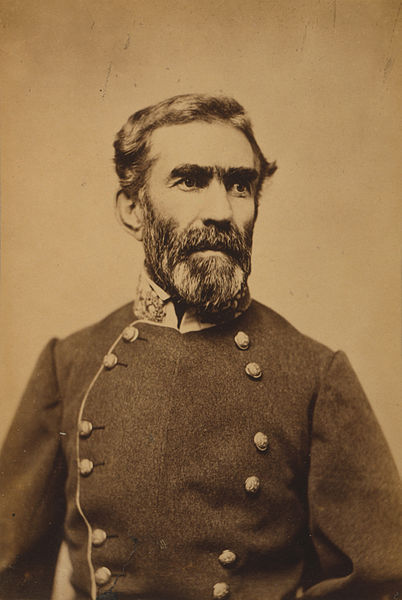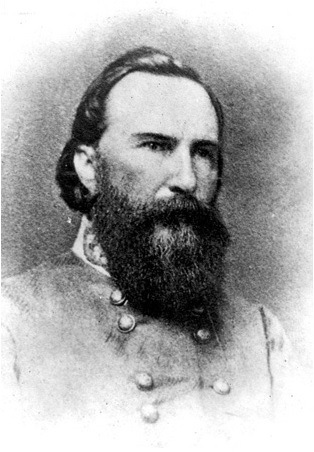Longstreet Goes West, part three: On to Nashville?


Longstreet’s move to Georgia took 9 days, though some of the trailing elements in his corps – Anderson’s Brigade, which was diverted to Savannah for a week or so, and any number of individual Georgians who hadn’t been home in two years, and who now took the movement as an opportunity for a bit of “French Leave” – arrived even later. The leading elements arrived on September 17. Three of his nine brigades saw combat on the 19th, under command of John Bell Hood; Longstreet himself (along with one or two aides) arrived at Catoosa Platform that afternoon, but he did not reach Bragg’s headquarters until 11 pm.
Braxton Bragg promptly gave Longstreet a wing command, consisting of 6 divisions – his own two, plus four from the Army of Tennessee. Longstreet’s mission was to support Leonidas Polk’s Wing when that officer attacked at day-dawn on September 20.
Polk, of course, was late. Longstreet spent the morning organizing his command, and attacked near 11 a.m. He achieved a staggering success, aided in part by a fortuitous Federal blunder committed on his front, at the Brotherton farm.
Near 3 p.m. Longstreet and Bragg conferred. Longstreet reported his success, and asked for reinforcements. To Longstreet’s later recollection, he found Bragg angry and much more pessimistic, based on the failings of Polk’s Wing, who had repeatedly assailed Union General George Thomas’s defenses around Kelly Field, and been repulsed each time. Longstreet would later recall that Bragg seemed defeated, and believed the army was, too; he seemed not to want to hear of Longstreet’s victory. Longstreet first described this meeting to D. H. Hill in the 1870s, and more explicitly, in his 1904 memoir. Almost certainly, Longstreet’s memory of that meeting was deeply influenced by subsequent events.
Whatever passed between them, this encounter marked a turning point in Bragg’s and Longstreet’s mutual relationship. During the first approximately 17 hours in which Longstreet and Bragg served together, the Army of Tennessee won the most complete battlefield success ever achieved by that army. From that peak, however, things went steadily downhill.
I have described what happened next, following that stunning success, on the morning of September 21. That link can be found here: